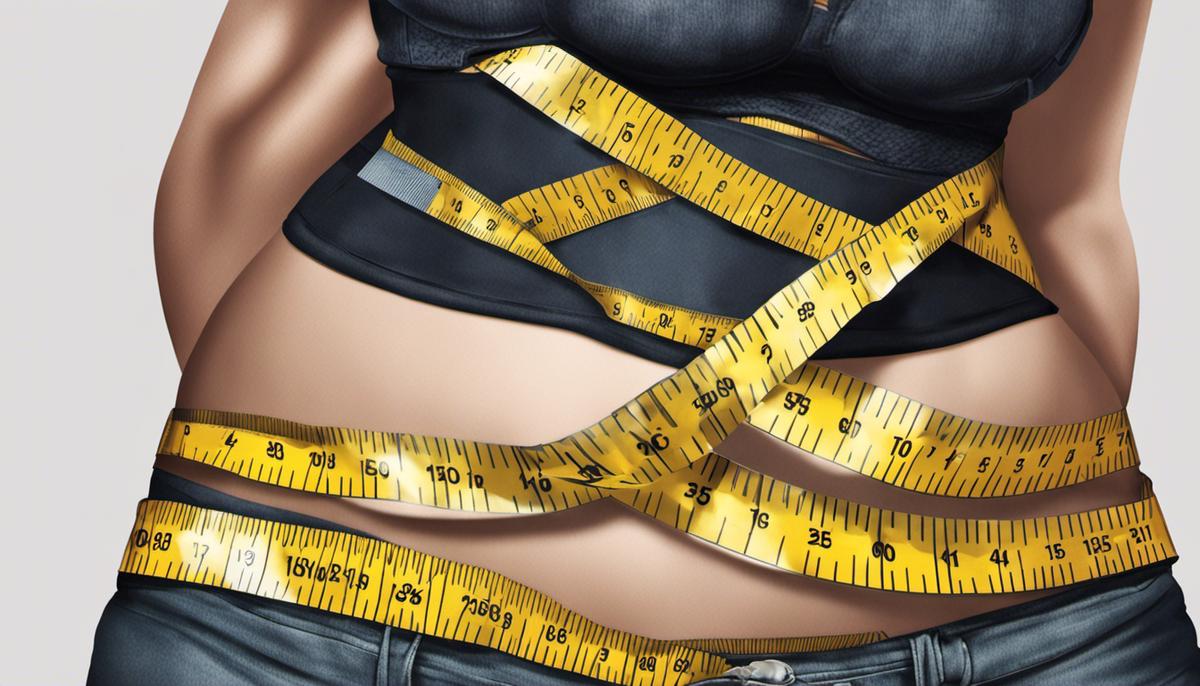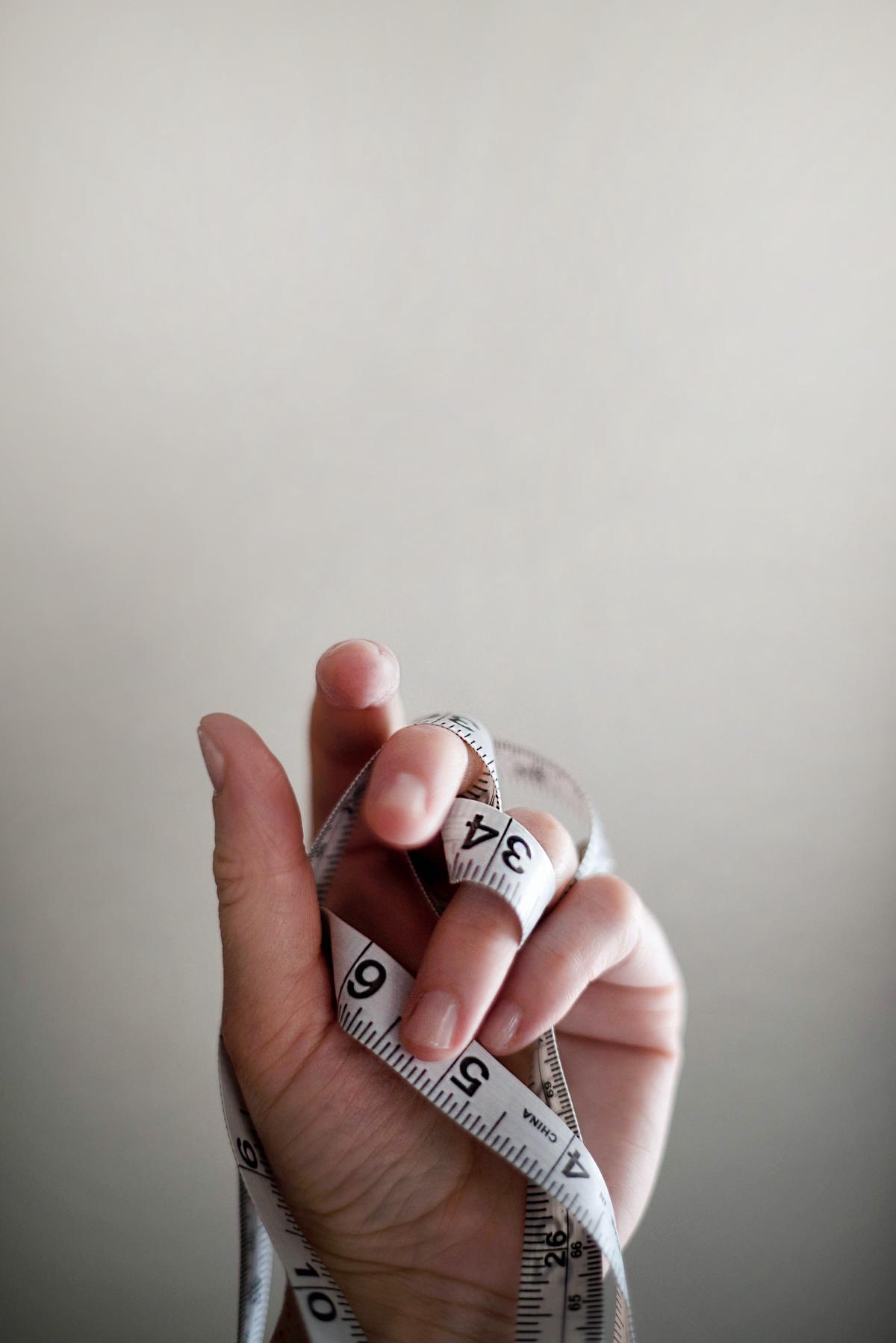In the multifaceted world of human health and aesthetic appeal, one metric often discussed yet seldom understood is the concept of girth measurements. As broader understanding of fitness, health, and personalized clothing continues to evolve, getting a firm grasp on this element becomes imperative. This exploration unravels not only the basic understanding of what girth measurements entail but also how they distinguish from similar concepts such as width, diameter, or circumference. Further delving into the intricate web of factors, such as age, sex, and fitness levels that significantly impact our ideal girth measurements, we are enabled to comprehend the wide-ranging variability among individuals.
The Concept of Girth Measurements
Understanding Girth Measurements
Girth, as a fundamental concept in measurements, refers to the distance around an object or the circumference. Unlike diameter, which measures the straight line passing through the center of a circle, or width, which simply measures across an object from side to side, girth takes into account the entirety of the object’s outer perimeter. Girth is commonly applied in various fields such as mathematics, physique quantification, cloth sizing, and parcel shipping, among others.
Significance of Girth Measurements
One of the primary significances of girth measurements exists within the field of health and fitness. Body girth measurements, for example, when taken at specific sites, can be an effective and non-invasive method to monitor improvements from diet and exercise interventions or detect risks associated with excessive body fat. In addition, girth measurements are critical in the clothing industry for tailoring clothes to fit individuals accurately. The values aid designers and tailors in creating comfortable and well-fitting garments.
The Difference Between Girth and Other Measurements
While similar to other measurements, girth differentiates itself on a fundamental level. Girth, synonymous with circumference, measures the distance around an object, and is commonly applied in scenarios involving round or cylindrical objects. On the contrary, diameter measures a straight line across a circle while passing through the circle’s center. Width, typically utilized to gauge the size of a rectangle or square, measures the shortest distance from one side of an object to another.
Ideal Girth Measurements
Talking about ‘ideal’ girth measurements can be a varying factor and be dependent on where and how it is applied. For instance, in health and fitness, ‘ideal’ girth measurements relate to desired body proportions, which can differ based on sex, age, and fitness goals. In contrast, ‘ideal’ girth measurements in industries such as packaging or merchandise shipping may relate to standard box sizes or capacity limits to control costs and ensure efficiency. As such, the concept of ‘ideal’ when it comes to girth measurements is highly subjective and context-specific.
Girth Measurements in Practical Use
Employment of girth measurements isn’t limited to just clothing design or physical health. For instance, in shipping and handling services, understanding and implementing accurate girth measurements can help control shipping costs because many logistics companies charge based on the size, weight, and girth of the parcel. In these instances, accurate girth measurements can not only ensure a parcel has been properly classified but can also help to avoid unnecessary surcharges.
It’s crucial to grasp the concept, significance, and practical application of girth measurements. These measurements aren’t just relevant in academic contexts, but they also have a role to play in various everyday situations. Due to their versatility and practicality, girth measurements form a vital part of our measuring systems.

Factors Influencing Ideal Girth Measurements
Understanding the Impact of Age on Girth Measurements
One element that heavily influences girth measurements is age. The body composition of a person is constantly changing as they age. Generally, younger adults possess less fat and more muscle mass, which results in smaller girth sizes. However, as people grow older, their muscle mass decreases whilst their fat content increases, leading to larger girth measurements. This is primarily due to the natural aging process and shifts in metabolism. But it’s worth considering that individual health habits, such as eating habits and fitness routines, can also contribute to these measurements.
Sex and Girth Measurements
Sex is another crucial element impacting girth measurements. Generally, males and females have different body structures and fat distribution, leading to varied girth measurements. Men are typically observed to carry more fat around their abdomen (apple-shaped) resulting in more significant waist girth, while women tend to store more fat around their hips and thighs (pear-shaped), causing a larger hip and thigh girth. Hormonal differences are mainly responsible for these variations in fat distribution between the sexes.
Girth Measurements and Fitness Levels
The level of physical fitness greatly influences the ideal girth measurements. Regular physical activity contributes to less fat storage and more muscle development, leading to a decrease in girth size. Therefore, individuals who lead a sedentary lifestyle usually have larger girth measurements compared to their physically active counterparts. This indicates that maintaining a regular exercise routine can significantly reduce waist, hip, and arm girth.
Girth Measurements and Body Composition
Ideal girth measurements can also depend on individual body composition. People with more muscle mass tend to have larger girths due to their muscular build. Conversely, people with higher body fat percentages might have larger girth measurements, since fat contributes significantly to body size. Therefore, body composition analysis, considering factors like muscle-to-fat ratio could shed light on understanding ideal girth measurements for different individuals.
Genetics and Girth Measurements
Genetic composition also plays a part in determining a person’s girth measurements. Genes are known to influence fat distribution and muscle building capacity in the body. As a result, genetics can partly explain why two individuals with the same age, sex, and similar lifestyles can still have differing girth measurements.
Ethnicity and Girth Measurements
Studies have consistently shown variations in girth measurements among different ethnic groups. These differences are believed to be due to variations in genetics, lifestyle habits, and cultural norms associated with body image. It is important to consider these racial and ethnic differences when determining ideal girth measurements.
Calculating the ideal girth measurements is not a one-size-fits-all process. It includes considering a multitude of factors, from age and sex to fitness level, body composition, genes, and even ethnicity.

Techniques for Girth Measurement
The Role of Measuring Tapes in Girth Measurement
One of the key tools for obtaining girth measurements is the simple measuring tape, favored for its easiness of usage and adaptability. The tape is usually positioned in a way so it’s parallel to the ground and lies firm yet gentle on the skin without compressing. Aim for a snug fit of the tape around the body part being measured, avoiding it being too tight.
Precise Girth Measurements with Calipers
Calipers provide a more precise method of girth measurement, often in areas demanding more accuracy such as medical or fitness industries. They function by pinching the skin and fat, or other flexible material, to understand the thickness for that specific point. The calipers should be placed perpendicular to the length of the body part. Once in place, the jaws are closed around the skin and fat, and the measurement can be read off the opposing side. This method requires more expertise and training to avoid incorrect placement and pressure, which could lead to inaccurate results.
Digital Devices: Modern Method of Girth Measurement
Digital devices such as body scanners and electronic measuring tapes are newer technologies used for girth measurements. These devices use lasers or electronic fields to capture a digital image of the body part, taking into consideration its volume, shape and size. This method allows for anatomically accurate, 3D representations, which provide detailed insights of the measured part. However, these devices may be less accessible due to their higher cost and need for trained operators.
Best Practices for Accurate Girth Measurements
Regardless of which method you choose, there are several practices that can ensure accurate results. Firstly, all measurements should be taken at least two to three times to reduce the impact of any potential errors. If large differences are found, additional measurements may be necessary. Secondly, consistency is important. Consistently positioning the measuring tool in the same place will reduce variables and provide reliable results over time. Lastly, consider the natural fluctuations of the body. Girth can be affected by fluid retention, food intake, and time of the day, which should be considered when measuring. In other words, measurements taken consistently at the same time of day, and under the same conditions will help ensure greater accuracy.
Girth Measurements: A Contextual Approach
An ‘ideal’ girth measurement doesn’t exist as a one-size-fits-all value. What is considered ideal can significantly fluctuate depending on an individual’s unique aspects such as age, sex, overall health, and level of fitness. Additionally, cultural norms, societal beliefs, and personal preferences can heavily color our perception of what defines the ‘perfect’ size. As such, it’s essential to examine the broader context when determining individually tailored, ideal girth measurements.

Understanding Ideal Girth Measurements in Different Contexts
Gleaning Clarity on Ideal Girth Measurements
The phrase “ideal girth measurements” is often used by health professionals, fitness experts, and clothing designers to denote the range of body circumference measurements that serve as guides for determining health status, evaluating fitness levels or establishing clothing size. These measurements generally include waist, hips, thighs, biceps, and neck circumferences. Nonetheless, the importance assigned to each of these measurements may shift based on the particular context in which they’re being used.
The Fitness Context of Girth Measurements
In the context of fitness, bodybuilders or athletes often monitor certain girth measurements to track their progress and athletic performance. For instance, an increase in bicep or thigh girth may suggest muscle growth, which can be a positive sign of an effective strength-training regimen. Conversely, an escalated waist girth could indicate an increase in body fat, potentially signaling the need for dietary or exercise adjustments. There is no universal ideal girth measurement in fitness as the goals may vary from person to person. However, a balanced body symmetry and proportionality are usually desired in bodybuilding.
Girth Measurements in Tailoring
For tailoring, girth measurements form the foundation of garment construction. Professionals use these measurements to create patterns and fit clothes appropriately on clients. The ideal measures in this context depend on the specific garment design, the person’s body shape, and individual comfort levels. Understanding the correlation between various body girths can help tailor the most flattering clothing.
Health Indices and Girth Measurements
In healthcare, certain girth measurements can provide valuable indices for potential health risks. A waist circumference of over 40 inches in men and over 35 inches in women is associated with an increased risk of metabolic complications like type 2 diabetes, hypertension, and cardiovascular disease. Therefore, these are often cited as the maximum ideal limits. Similarly, a waist-to-hip ratio above 0.90 for men and above 0.85 for women suggests central obesity and an increased disease risk. For neck circumference, anything above 16 inches for men or above 13 inches for women can indicate potential sleep apnea or other obesity-related conditions.
The Link Between Girth Measurements and Overall Health
It’s vital to understand that ‘ideal’ girth measurements are not fixed values but must be viewed in relation to individual health. For example, larger waist size may not always indicate a potential health risk if it’s due to muscle buildup instead of fat. Similarly, clothing size or muscle circumference alone should not serve as the ultimate gauge of general fitness or health. Instead, height-inclusive measures like the Body Mass Index (BMI) or the waist-to-hip ratio can provide a more comprehensive evaluation of a healthy body weight and mass distribution.

Myths and Misconceptions about Girth Measurements
Deciphering the Significance of Girth Measurements
Understanding girth measurements involves acknowledging the circumference of several parts of a person’s body. These measurements are usually acquired through a flexible yet non-elastic tape measure. Common areas measured include the waist, hips, bust, arms, legs, and wrists. Each of these areas offers crucial insights into a person’s body configuration, physical fitness, and ultimate health composition.
Myth: A Smaller Girth Measurement is Always Better
A widespread misconception often seen in weight loss and bodybuilding forums is that a smaller waist or limb girth is always better. However, this is not entirely accurate. Girth measurements are practical tools for tracking changes in body composition, particularly gains in muscle mass or loss of fat. A smaller measurement doesn’t necessarily mean healthier or fitter; it’s essential to consider various factors such as body composition, age, height, gender, and genetic factors.
Myth: Ideal Girth Measurements are the Same for Men and Women
Many people wrongly assume that ideal girth measurements should be the same for both men and women. Men and women possess inherently different body structures and distributions of fat and muscle. Therefore, their ‘ideal’ girth measurements vary greatly.
Myth: Girth Measurements Determine Health
Another common myth is that girth measurements themselves can definitively determine a person’s health. While associated with certain health markers, solely relying on these measurements is both insufficient and misleading. Things like waist-to-hip ratio, waist-to-height ratio, and other health facets like blood pressure, cholesterol levels, and lifestyle habits are equally or more important.
Myth: All Body Fat is the Same
People often overlook the fact that not all body fat is the same. Subcutaneous fat, located just beneath the skin, differs from visceral fat, which surrounds internal organs. A person with a large waist girth could be carrying dangerous amounts of visceral fat, leading to higher risk of conditions like heart disease and diabetes. Subcutaneous fat is less dangerous but can still be problematic if in excess.
Myth: Girth Measurements should be used Alone
Girth measurements should not be used in isolation but incorporated into a broader suite of assessments to provide a holistic view of one’s health and fitness. This can include body mass index (BMI), waist-to-hip ratio, body fat percentage, and fitness assessments such as strength, flexibility, and stamina tests.
Myth: There is a Universal ‘Ideal’ Girth Measurement
Finally, there is a common belief in a universal ‘ideal’ girth measurement that individuals should strive for. This belief is not only incorrect but misleading. Ideal measurements vary significantly between individuals, depending on a wide range of factors, including genetics, physical fitness, activity levels, age, and health status.

Photo by jenandjoon on Unsplash
While girth measurements are a critical aspect of personal wellbeing and stylish fit in clothing, various myths and misconceptions often lead to erroneous conclusions and discouragement. By dispelling these inaccuracies and providing a clear perspective, we illuminate the subject matter, enabling everyone to comprehend and apply this information towards beneficial ends. From fitness enthusiasts seeking to track their progress, people aiming for perfect tailoring to health professionals using these metrics as part of a comprehensive health screening, an in-depth knowledge of girth measurement serves as a valuable tool in the arsenal of individual well-being. Ultimately, acquiring a firm understanding of ideal girth measurements and their applications ushers you to an elevated level of awareness that transcends basic aesthetics, dovetailing into the realm of holistic wellness.
